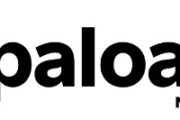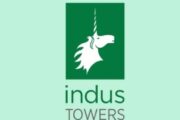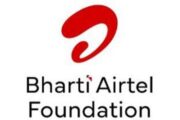Vishal Rally, Sr. Vice President – Product & Commercial, Tata Tele Business Services,
In the Indian telecom enterprise space, Tata Docomo Business Services (TDBS) was the first TELCO to set up an IoT practice providing range of complex solutions to customers across the country. At present, TDBS is offering IoT solutions in the areas of Fleet Management, Asset Tracking and Automated Meter Reading for Utilities.
According to Vishal Rally, Sr. Vice President – Product & Commercial, Tata Tele Business Services, “The company focuses on product innovation and has many “industry firsts” to its credit. We were the first to offer cloud based IOT services and SaaS solutions among others to enterprise customers across the country.” ITNewsBuzz has has a small interaction with Vishal rally. Excerpts…
- What kind of services does Tata Docomo Business Services provide to their enterprise customers? What are the new service offerings for your enterprise customer and how will it be beneficial to them?
Ans: TDBS provides comprehensive suites of Information & Communication Technologies (ICT) solutions to enterprises in India. It provides technology-based offerings across the following service categories –
- Enterprise Collaboration: Conferencing
- Enterprise Connectivity: Data Solutions, Managed Solutions, Voice Solutions
- IoT Solutions: Asset Tracking, Fleet Tracking, Workforce Tracking, School Bus Tracking
- Marketing Solutions: Call Register Services, Hosted IVR, SMS Solutions, Toll-Free Services
- Mobility Solutions: Collection Application, Mobile Device Management, Research Application, Sales Application, Service Application
Two new offerings from TDBS are –
- SLA on Wireline Voice Services: TDBS is the first Indian Enterprise Service Provider to introduce Service Level Agreement (SLA) on Wireline Voice Services (PRI/SIP) in India. Currently, no other service provider in India offers SLA with wireline voice services. Globally service providers have been offering SLA with voice products, however, in India, we will be the first ones to provide SLA. In India, service providers do provide an SLA but only on Data. TDBS will offer its customers 99.5% guaranteed service availability/uptime. In case of failure to provide a committed level of service, the customer will be provided with service credits as mentioned below:
| Performance | Service Credit |
| Between 99.0% and 99.5% | 1 day rental |
| Between 98.5% and 99.0% | 2 days rental |
| Between 97.5% and 98.5% | 3 days rental |
| Below 97.5% | 4 days rental |
- Ultra LOLA: Ultra LOLA is a technologically superior solution that provides robust low latency telecom infrastructure to institutional stock traders, helping them process market data in real time. Between the two stock exchanges in India, TDBS provides 25 times faster connectivity against the conventional network speed.
- How are you planning to leverage 4G solutions for enterprise customers?
Ans: We will offer 4G services to our enterprise customers as a last mile connectivity options, complementing with our country wide wireline infrastructure.
- How TDBS performed in 2016-17? What are your plans for 2018?
Ans: TDBS registered a 15% growth in 2016-17 against a 7% industry growth.
In the coming 2-3 years, TDBS aims to –
- Focus on reaching out to the next one million potential SME customers. We aim to double our customer base to 1 lakh in the near future. The optimism for such high growth curve stems from the huge headroom available for growth in the SME space
- Reach more locations through physical partnerships, the digital medium and our transition from a connectivity provider to a one-stop-shop business solutions provider.
- Do you see new technologies like AI, IoT and IoE gaining traction in 2018 and why? How prepared is TDBS for these new trends?
Ans: India released its first IoT framework in 2014 that aims to create a huge IoT market by 2020, impacting the growth of connected devices from the current 200 million to 2.7 billion by 2020. Even if half of that number is achieved, it will be a staggering number of end-points. IoT is seeing success in Utilities, Logistics, Transport and Retail in India. Most research companies project that 2-5 billion devices will get connected by the year 2020. According to a recent NASSCOM study, in the next five years, the global opportunity brought about by IoT is likely to touch USD 300 billion and in comparison, India too would boast of a USD 15 billion market. Despite widespread awareness, large scale adoption and implementation of IoT is still a challenge primarily because organizations are still struggling with the IoT ecosystem.
In the Indian telecom enterprise space, TDBS was the first TELCO to set up an IoT practice providing range of complex solutions to customers across the country. At present, TDBS is offering IoT solutions in the areas of Fleet Management, Asset Tracking and Automated Meter Reading for Utilities.
- What are some of the key challenges when it comes to the changing technological trends in the SME segment?
Ans: The SME segment is growing rapidly and is fast adopting technology, as businesses realize that technology not only cuts cost but is an integral part of operations. But SMEs do face some major challenges with the fast changing technology trends. Some key concerns are technology know-how, lack of funds, cost, etc. While most SMEs are keen on adopting the technology, lack of awareness and poor infrastructure holds them back. They are unsure of which technology model to choose and how to implement it, since they have varied requirements in terms of scalability, flexibility, and costs.


























